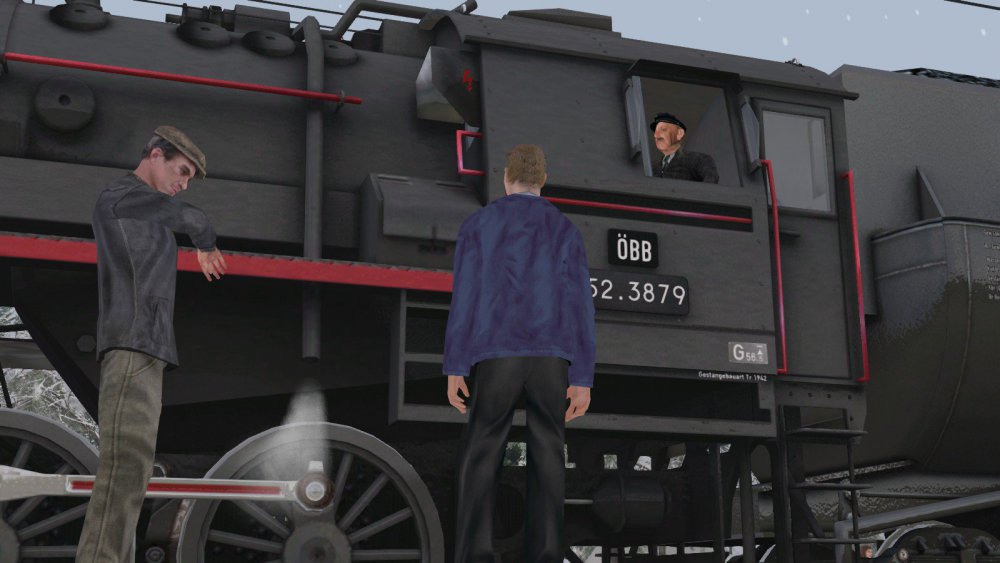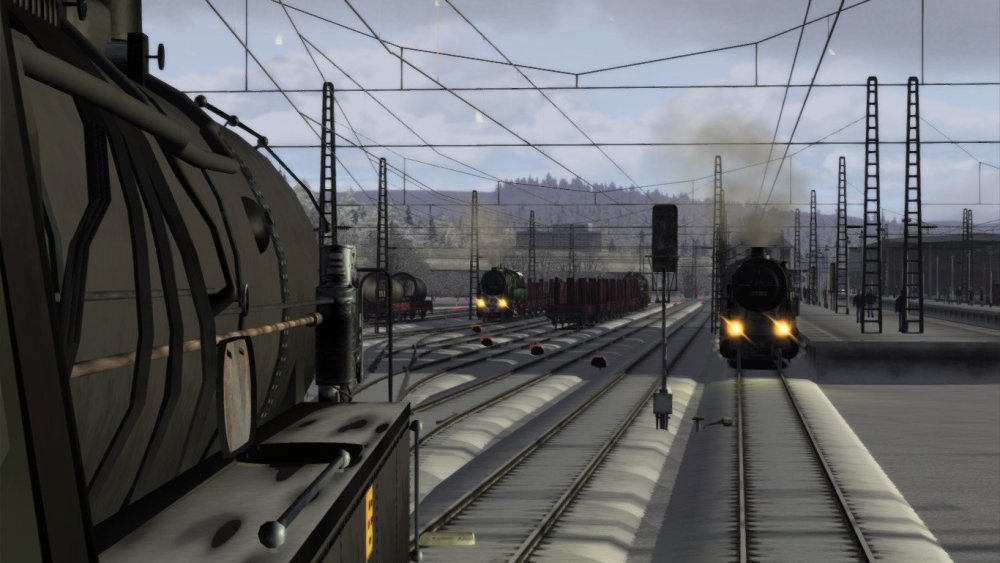Hi to all and Welcome to this educational blog.
In this first episode I am going to explain how to prepare your engine in default mode. We will start with the Class 52 of the East German Railway Deutsche Reichsbahn at the Ruhr Sieg line. Though the Class 52 was ceased service in the former West Germany the original design of class 50 remains untill the end of steam The East German Railroad stall had this class completely overhauled and most of them were fitted with a new boiler which gave more performance in comparisment with the non refurnished class 52. Class 52 was a war machine and a redesign of class 50 but with less equipment due to WWII activities.
Class 52 comes with the Ruhr-Sieg line as an default engine and later the 3d Creator "Eisenbahnwerk" added a tanker-tender to it better known as: "Wannentender" which were often in use with severall steam locomotives in Germany. The "Wannentender" was widely used with class 38 (P8), 42, and 52 This simplified self-carrying tender was a half tanker with a coal unit fit to it causing less weight to the engine itself.
Now when you start to prepare your engine prior to departure you need to check your engine. Not only your engine must be prepared but also your virtual environment like your PC , monitor, keyboard and mouse. Nothing is so annoying as a nonfunctional keyboard and mouse during the execution of a scenario.
Here is a list you check prior to start anything in TS20XX;
- Cables connected?
- Power plugged in?
- Monitor powered?
- PC powered?
- Keyboard and mouse working?
- Monitor set? (Brightness, color, whitebalance, etc?)
- Sound Speaker set?
- Chair is in comfortable position?
- You got anything to drink or eat?
- Cell phone in sleeping mode of turned off? (Do not drive and use cell phone even during the execution of a scenario!!!!)
Okay, so far so good!
Now when you should drive a real steam powered engine you need to prepare your engine priorr to departure.
Depending the size and scale of a steam locomotive it takes about 9 hours before a standard 1:1 engine is able to run after the fire has been ignited. Metal needs to be settled as the temperature rises. and the steam pressure in the boiler starts to increase.
In TS20XX the engine is already pressurized but still you need to to perform somethings prior to departure.
Here is the check list you need to do:
Topping up supplies is only available with water and coal. These fuels are already topped up. In reality you need to check the whole engine and search for failure all along the engine itself.
- Open the blower by pressing [ N ]
- Open the dampers by pressing [ M ]
- Open the fire door by pressing { R }
- Start shoveling by pressing [ F ]
Keep on shoveling for 2 minutes
- Stop Shoveling by Pressing [ Shift ] - [ F ]
- Close the fire door by pressing [ Shift ] - [ R ]
- Check the boiler pressure. The is should be at 16 atm now.
Now in standard mode you are able to continue shoveling without any problems. but in the reality you must stop shoveling in order to avoid embers and cinders. Embers and cinders will cut-off the oxigene flow through the fire grate and creates a slack.
Before you start to drive open the air pump by pressing [ J ] or move the mouse over the air pump valve which is situated just above the regulator. By default the air pump is running, but using the [ J ] will open the steam flow towards the air pump.
The air pressure of the brake system must be at least 5 atm/bar in order to operate te brake system.
When everything look fine right now. then you are ready to run.
Keep an eye on the pressure continuously during the run. Next episode I will continue with the next lesson


